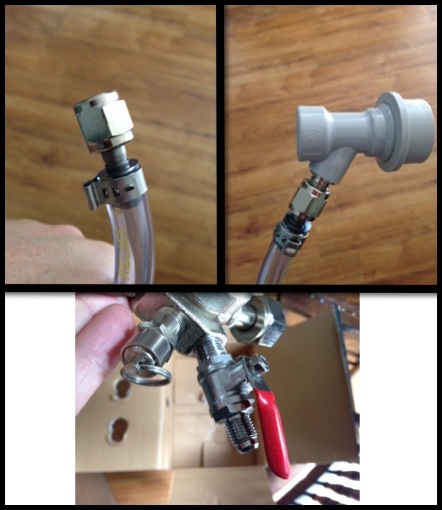If you’ve been bottling for a while then you know what a pain in the butt it is and are ready to learn how to keg your homebrew. Probably the hardest thing when starting to keg is knowing what equipment you need to buy, especially if you’ve never kegged before! Luckily, setting everything up is pretty easy once you have the right gear, and after that, you just need to learn how to start serving your beer like a true cicerone.
Table of Contents
What About ‘dem Kegs
The first, and most obvious thing you are going to need is a keg! Now, these are not your normal Budweiser gigantic kegs we see at frat parties. The thing you’re looking for is called a “corny keg”.
The most common style you’ll see is the 5 gallon version, but they also sell them in 3 gallon and 2.5 gallon versions. 3 gallon versions are great for 3 gallon batches, and I use 2.5 gallon kegs for when I do a split batch for experimenting.
Another obvious bit you’ll need is the C02 tank. They come in 5, 10, and 20 pound tanks. I am currently setting up a 6+ tap system in my garage, so opted for a 10 pound tank. For a single tap, a 5 pounder will probably be sufficient.
I made the mistake of BUYING my CO2 tank brand new for $120. I didn’t realize that they are typically exchanged like propane tanks. No way am I going to exchange my brand new one for a crappy used one. There are some places that fill them for you, and lucky for me, there’s a place nearby that does it on Thursdays (only). I heard that the licensing is expensive though, so if you decide to buy a shiny new CO2 tank for your homebrew keg system, check your local welding gas shops to see if they fill them.
I could go on an on about kegs – there’s actually a lot to know and learn, and I may dedicate a post to that at a later date.
Filling + Carbing
Once you have a keg you like, you need to know how to fill it and carbonate your beer. I was kind of freaked out the first time I went to fill my keg just because it was unfamiliar to me. There’s really not much to it though. If you consider your keg to be just like a giant bottle, then you’ll be OK.
- Step 1: Sanitize everything
- Step 2: Fill with beer
- Step 3: Close lid securely
- Step 4: Attach gas lines and begin carbonation phase
I’m lazy, and just bought everything pre made from Norther Brewer, but you can buy all the separate equipment you need from a local shop or online. Assuming your keg has all the gaskets and locks it needs, you just need a few more things.
- CO2 regulator
- Gas tubing
- Connectors for gas line to regulator + line to keg
- beer tubing
- Connectors for beer line to keg and serving method

Reading is one thing, but seeing is another. I’ve seen several videos on YouTube on the topic of how to keg homebrew, but this is the best one I’ve seen.
Serving Your Homebrew From A Keg
Now that your beer has sat under pressure from the carbon dioxide for a few days, the CO2 will be dissolved into the beer, and it’s ready to serve!
The most basic style of serving from a keg is going to be the plastic faucet head you see soda served out of at many restaurants. If you want a real cool setup, then you’re going to need a tap. Turning an old refrigerator into a kegerator is pretty easy, and I’ve got a tutorial coming out soon on that. But without drilling a hole in your fridge, or buying/making a kegerator, the plastic faucet is the way to go.
The connector hooks to the ‘out’ side of your keg, and beer comes out the other end! If you are force carbonating to speed things up, 30-40 PSI is fine, but for serving, 10-12 PSI is the recommend average pressure. Don’t forget to release some of that extra pressure before serving so you don’t get a foam bomb!
You can also double check the recommended carbonation levels for the style of beer you are serving. Styles like Belgians and wheat beers may require higher levels.
Surprisingly enough, that’s all there is to kegging your homebrew! A keg, a CO2 tank, and a few bits of tubing/connectors is all you need. Once everything is connected, carbing your beer is just a matter of patience. Serving like a pro will take some practice, but hey, no one is watching, right?!
Have you started kegging yet? What was the most difficult part of the process for you? Let us know in the comments so newbies can avoid the same mistakes.
Like and share if you love home made beer!
Leave a Reply